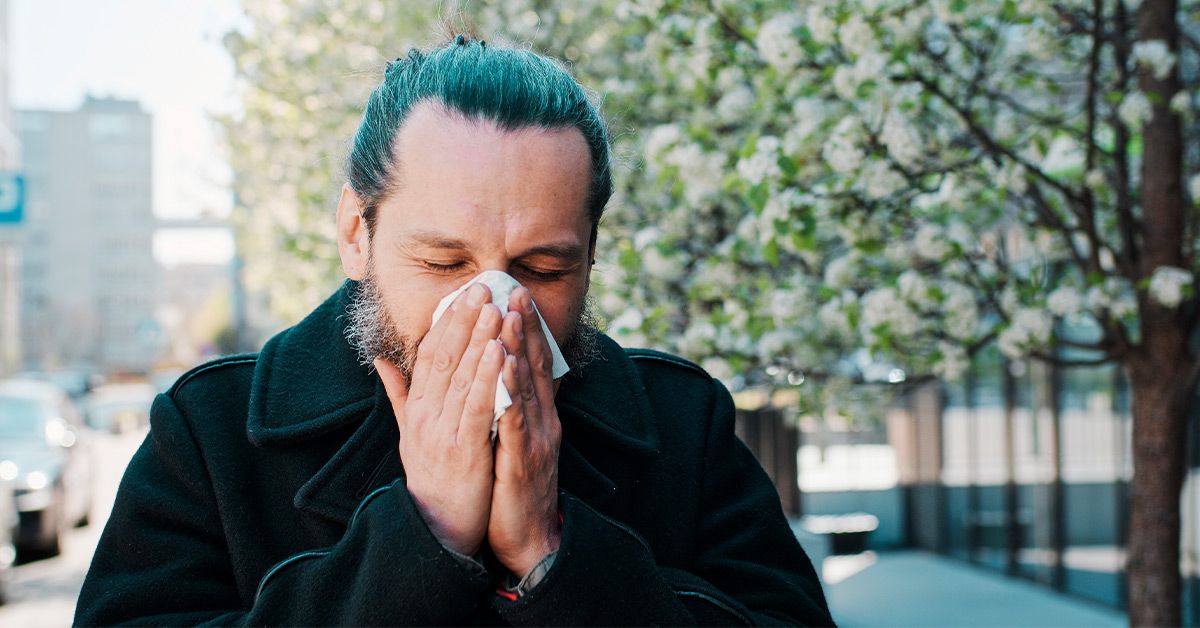Health
Why Spring Allergies Are Expected to Be Longer, Stronger This Year

The Rising Tide of Seasonal Allergies: How Climate Change is Making Them Worse
Seasonal allergies, often referred to as hay fever, have become a growing concern in recent years. What was once a minor annoyance for some has evolved into a more severe and prolonged health issue for many. Experts point to climate change as a significant factor behind the worsening of seasonal allergies. Longer growing seasons, earlier blooms, and heightened pollen production are all linked to rising temperatures and erratic weather patterns. As a result, millions of people are experiencing more intense and longer-lasting allergy symptoms, from sneezing and runny noses to itchy eyes and sinus congestion. The culprit? Pollen—tiny, airborne particles released by trees, grasses, and weeds—that is now present in higher quantities and over an extended period.
Understanding the Connection Between Climate Change and Allergies
The relationship between climate change and seasonal allergies is complex but well-documented. Warmer temperatures and increased carbon dioxide levels create ideal conditions for plants to thrive and produce more pollen. This process disrupts the natural rhythms of plant growth, leading to earlier and longer pollen seasons. For example, areas that once experienced a brief period of high pollen levels now endure weeks or even months of elevated counts. Frederic Bertley, PhD, president and CEO of the Center of Science and Industry (COSI), explains, “Climate change impacts allergy season because the consistent rhythm of pollen production is off-kilter. Plants are pollinating earlier in some areas and later in others, creating a prolonged and unpredictable allergy season.”
The financial burden of seasonal allergies is also significant. Pollen-related medical expenses in the U.S. exceed $3 billion annually, reflecting the growing need for medications, doctor visits, and other treatments. This economic impact underscores the importance of addressing the root causes of worsening allergies and finding practical solutions to mitigate their effects.
Strategies to Limit Pollen Exposure and Reduce Symptoms
While climate change is a global issue, there are actionable steps individuals can take to reduce their exposure to pollen and alleviate symptoms. The most effective approach is to minimize contact with allergens, both indoors and outdoors. Here are some practical strategies:
Keeping Pollen Out of Your Home:
Start by creating a pollen-free zone inside your home. Close doors and windows during peak pollen hours, especially in the early morning and late afternoon when pollen counts are typically highest. While it might be tempting to let in a breeze, open windows can allow pollen to enter and circulate indoors. Consider using HEPA (High Efficiency Particulate Air) filters in your HVAC system or air conditioning unit to trap pollen and other allergens, improving indoor air quality.
Regular cleaning is also essential. Dust surfaces frequently, and vacuum carpets and upholstery with a machine equipped with a HEPA filter. Don’t forget to wash bedding and curtains regularly, as these can harbor pollen and dust.
For pet owners, bathing your furry friends can help reduce their dander, which often carries pollen into the home.
Washing Away Pollen:
Handwashing is another simple yet effective way to reduce pollen exposure. Pollen can cling to your hands and then transfer to your eyes, mouth, or nose, exacerbating symptoms. Make it a habit to wash your hands after spending time outdoors or before touching your face.
Outdoor Precautions:
If you plan to be outside during allergy season, there are ways to minimize your exposure. Check pollen levels in your area through local weather reports or allergy tracking apps. If pollen counts are high, consider staying indoors or rescheduling outdoor activities.
When you do venture out, remove pollen from your skin and hair as soon as possible. Showering after spending time outside can help wash away pollen, and washing your clothes immediately can prevent it from spreading indoors. If you’re highly allergic, avoiding outdoor activities entirely during peak pollen times may be necessary.
Medical Relief and Long-Term Solutions
For many people, prevention alone isn’t enough to manage seasonal allergies. Fortunately, there are a variety of medical options to provide relief. Over-the-counter (OTC) medications such as antihistamines, nasal corticosteroids, and decongestants can help alleviate symptoms. If your allergies are severe or persistent, your doctor may recommend stronger prescription versions of these medications or suggest allergy immunotherapy.
Allergy immunotherapy, often referred to as allergy shots, is a long-term treatment that involves gradually introducing small amounts of allergens to your body to build immunity. This approach can reduce sensitivity over time and is especially effective for those with severe allergies.
The Economic and Social Impact of Seasonal Allergies
The consequences of seasonal allergies extend beyond personal discomfort. They also have significant economic and social implications. Lost productivity at work, missed school days, and increased healthcare spending are just a few examples of the broader impact. Additionally, seasonal allergies can interfere with outdoor activities and overall quality of life, making it difficult for individuals to enjoy nature during peak pollen times.
Addressing the root causes of worsening allergies—such as climate change—requires a collective effort. While individual actions to reduce pollen exposure are important, broader environmental policies and initiatives to curb greenhouse gas emissions are critical to reversing the trend of longer and more severe allergy seasons.
Conclusion: Taking Control of Your Allergy Season
While climate change is a global challenge that requires systemic solutions, there are steps you can take to protect yourself and your loved ones during allergy season. By limiting pollen exposure, maintaining a clean home, staying informed about pollen levels, and seeking medical relief when needed, you can reduce the impact of seasonal allergies and enjoy the beauty of nature—even as the seasons change.
In the words of Frederic Bertley, “As much as we love Mother Nature, if you are very allergic, it’s important to take precautions and stay out of her way as best as possible until the pollen subsides.” With the right strategies and mindset, you can reclaim your spring and summer from the grip of seasonal allergies.